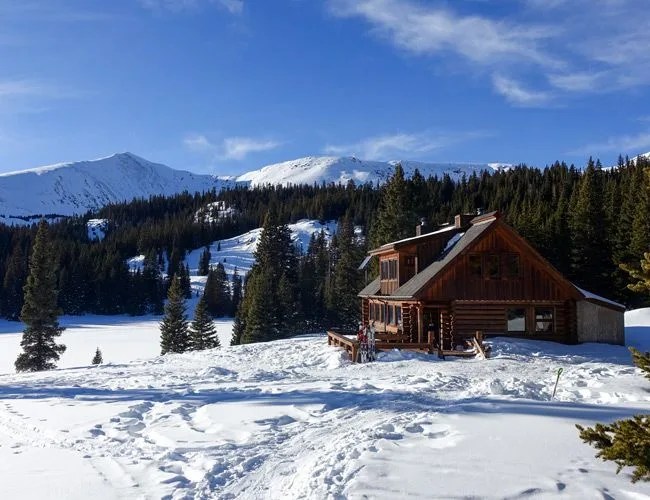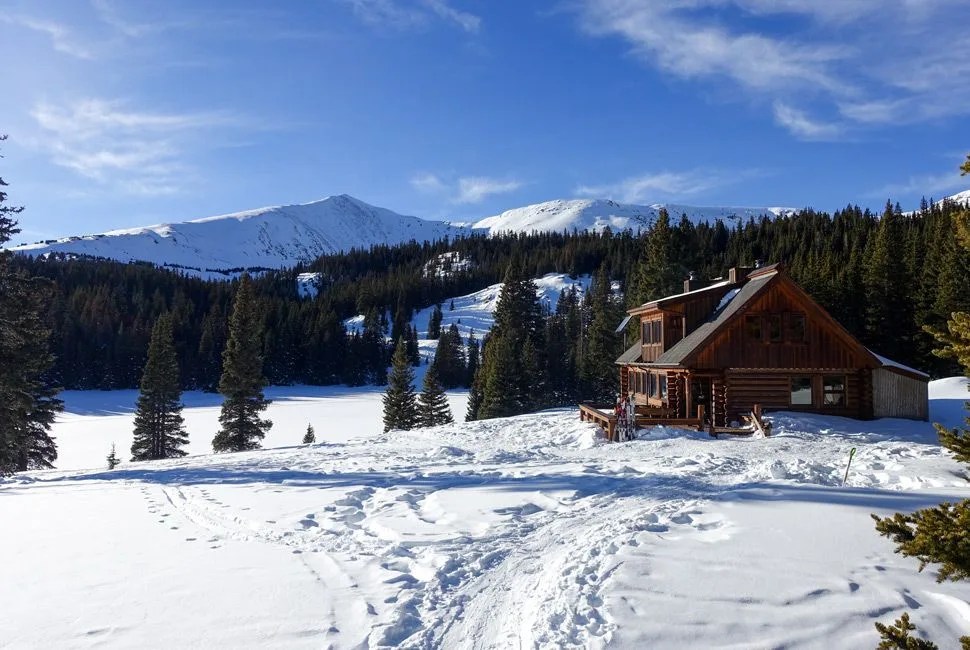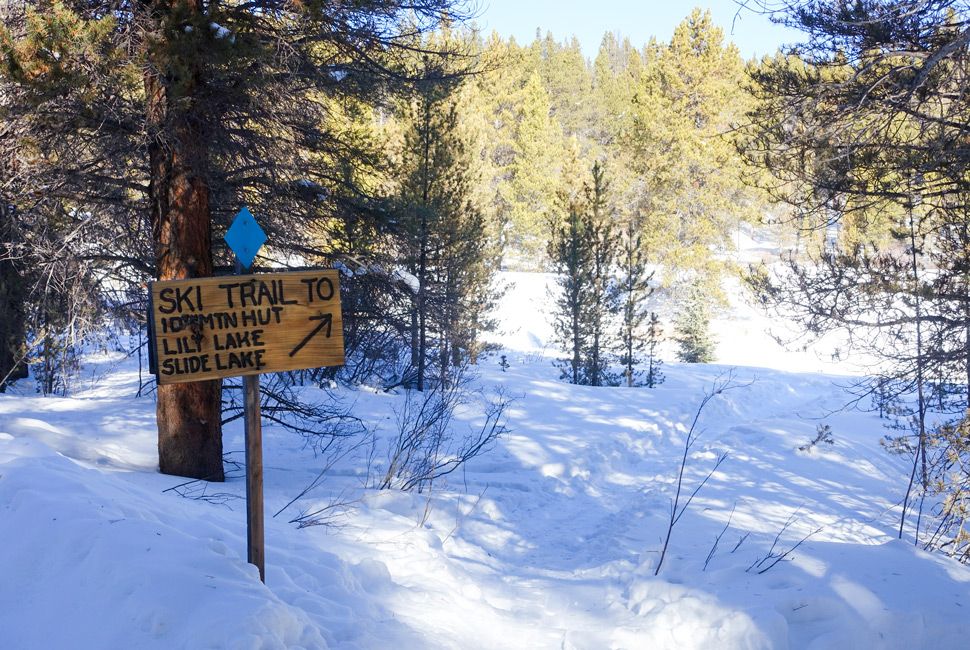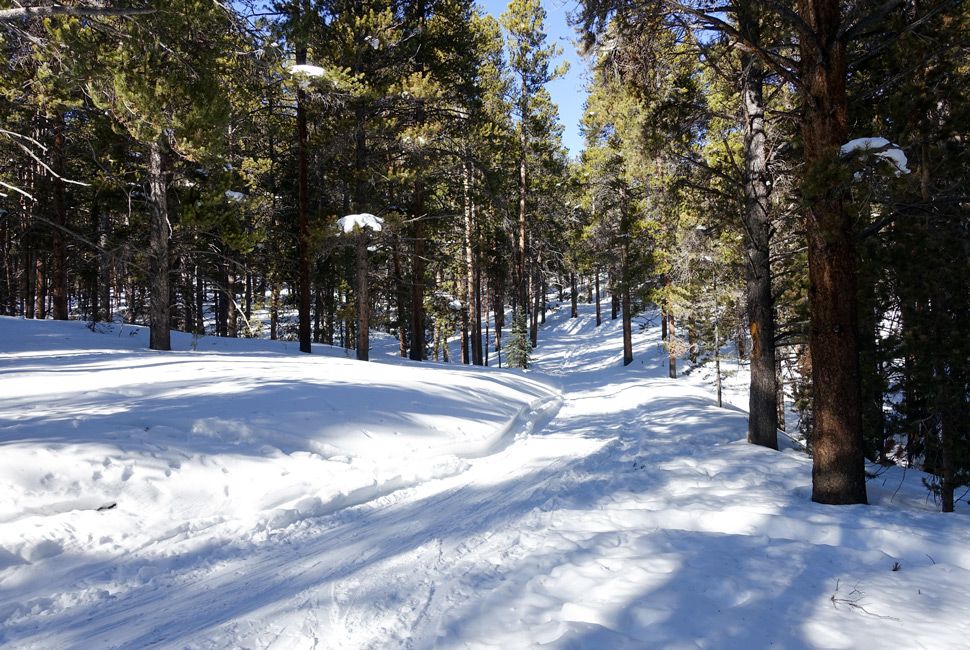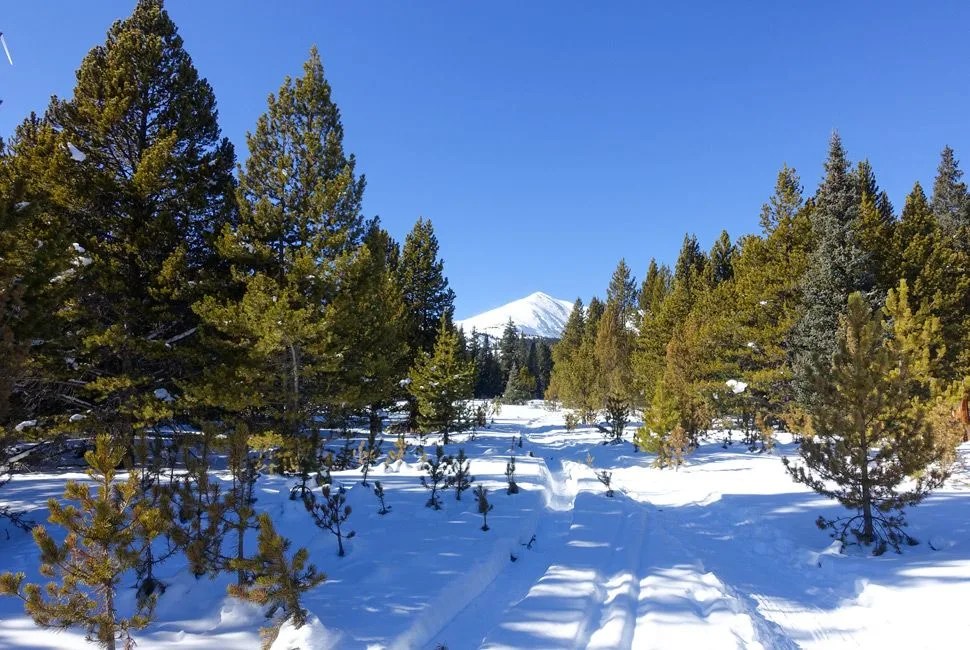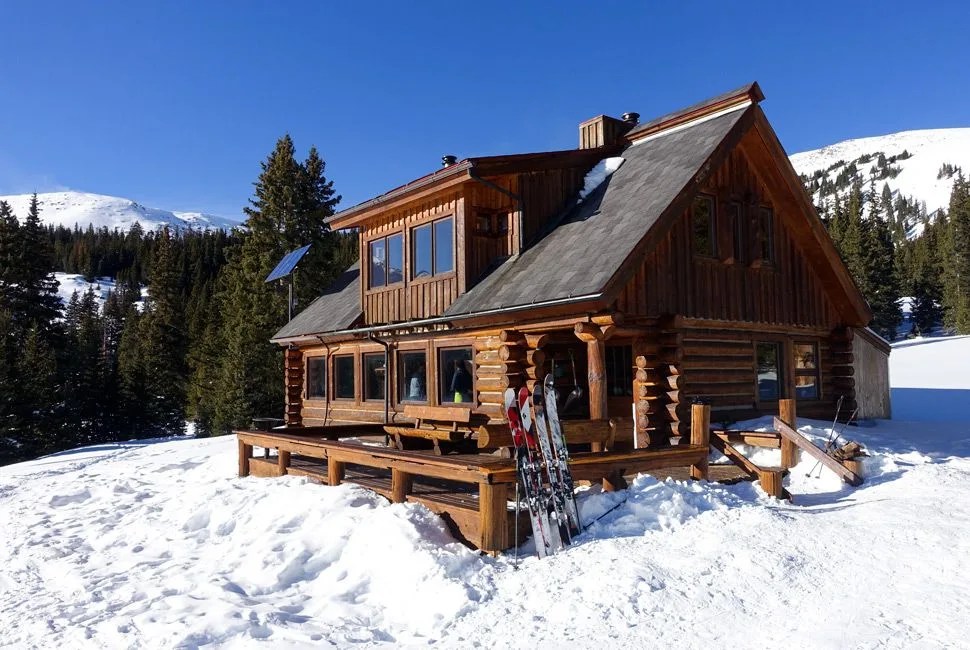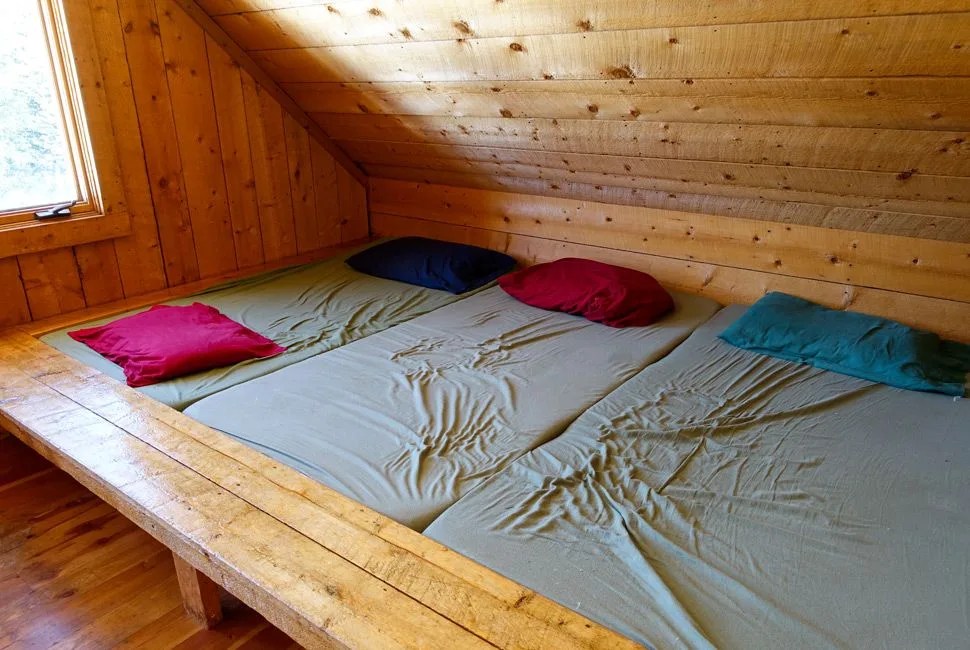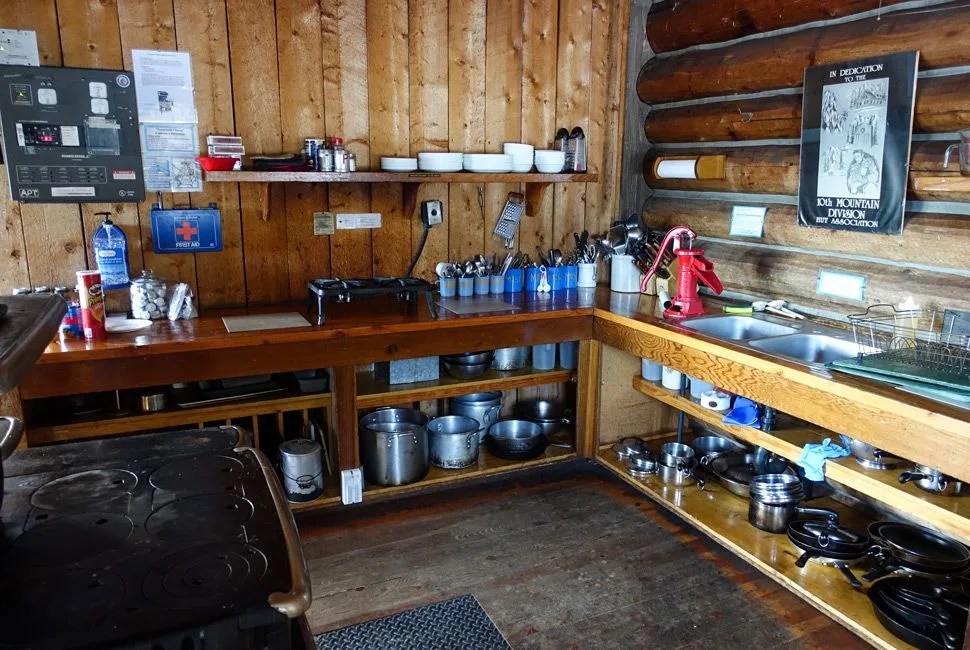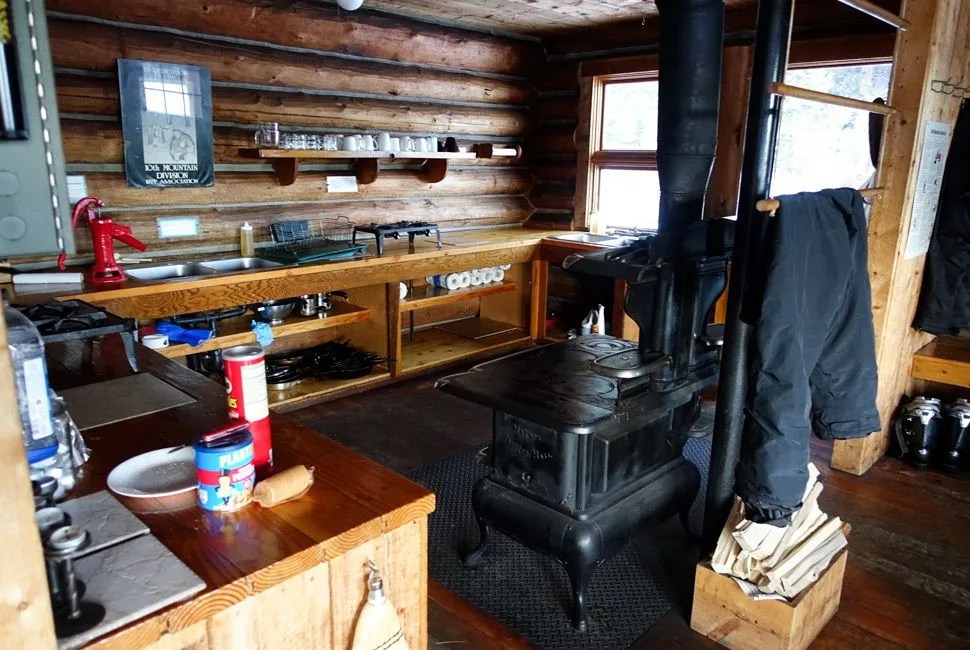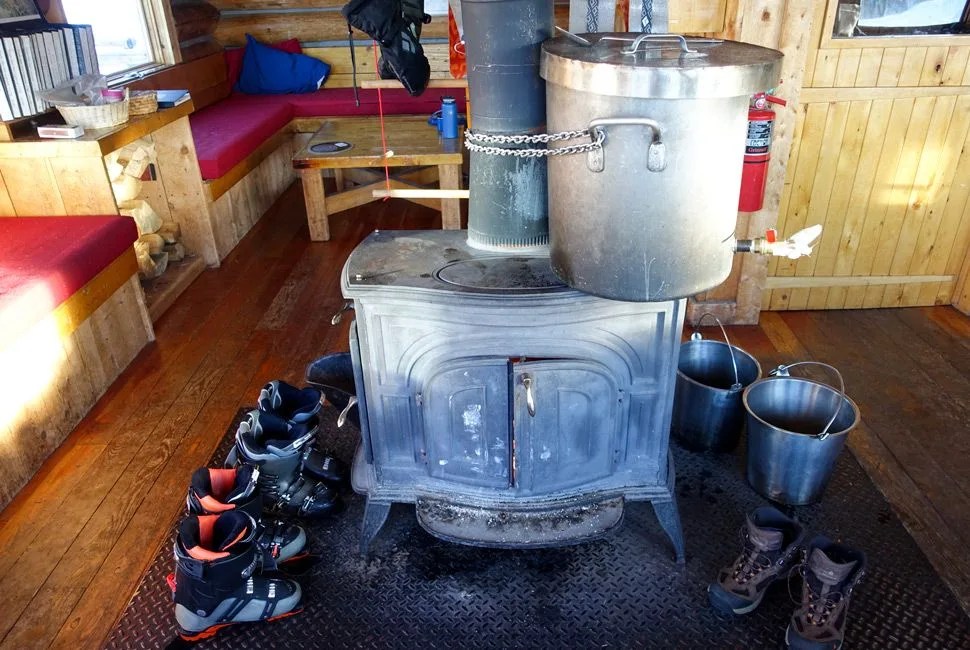10 photos
A mile and a half from the cabin, my leg broke through the snow. It was a surprising, knee-buckling jolt, straight down and sudden with the force of a post driver. It was not something I felt coming; with 30 pounds on my back, my legs were forced into a right angle, one straight out behind me and the other pole-planted into the snow. I surrendered there and then. After relying on traction pads for the first three miles, I switched into my snowshoes. This immediately corrected the problem, and, with my weight now properly distributed on the snow, I hiked comfortably the rest of the way and arrived at my destination, the 10th Mountain Division Hut.
The 10th Mountain Division Hut Association’s flagship shelter, one of the 34 inhabitable memorials built in honor of the 10th Mountain Division of the Army, the mountain warfare unit of the United States military, sits in the shadow of Homestake Peak at the end of a 4.5-mile hike that begins just a few miles from Leadville, Colorado. The hut, deck and all, was impressive in size, even when tempered by the looming 13,209 feet of Homestake Peak overhead. Inside, I was greeted by a German couple and two college roommates; we exchanged pleasantries and stared out the hut’s large windows at the winter wonderland of sunlit snow and tall green pines against the backdrop of the tall peaks and baby-blue sky.
It’s always nice to meet fellow mountain-goers and connect over a love of outdoor adventure, but the hut itself — and the story it tells — was about to steal the show. The idea for the United States military to create a horse-and-mule-aided mountain regiment came about in the first place because members of the National Ski Association, recognizing that Germany was far more advanced in mountain combat, proposed it to the government in 1940 during World War II. The Association wrote to President Franklin D. Roosevelt and even offered the assistance of the National Ski Patrol in training such a group of “skiing soldiers.” The concept was resisted at first. A year and a half later, after watching how small, well-trained groups of Greek alpine soldiers were able to defeat larger numbers of unprepared Italian troops in the mountains of Southern Europe during the Greco-Italian War, the government reconsidered their position, and the 10th Mountain Division was born.
With the National Ski Patrol in charge of recruitment, the first group of over 8,000 volunteers to enlist was primarily made up of alpine guides, lumberjacks, forest rangers, blacksmiths, trappers, cowboys and skiers. They trained on 14,408-foot Mt. Rainer in Washington until a permanent base, Camp Hale, was constructed for them in an alpine valley near Leadville, Colorado. In addition to ski training, the 10th was showered with an encompassing amount of mountaineering skills, including rock climbing, mule packing, trail breaking, fighting forest fires and building snow caves. Their packs, at times weighing a back-breaking and mind-boggling 122 pounds, held basic survival gear stuffed in alongside pitons, skis, axes, machetes, lip balm, rifles, helmets, goggles, mittens and muzzles — to name a few.
If You Go:
[iframe src=”https://www.google.com/maps/embed?pb=!1m10!1m8!1m3!1d49348.51872648951!2d-106.39078619580077!3d39.37248383621186!3m2!1i1024!2i768!4f13.1!5e0!3m2!1sen!2sus!4v1453865171770&w=290;h=320″][/iframe]
The 10th Mountain Division Huts are spread throughout Central Colorado. Specifically, the 10th Mountain Division Hut is reached during winter from the Crane Park Trailhead, 7 miles west of Leadville. It is a 4.4-mile, 1,233-foot ascent that can be accomplished with snowshoes or backcountry skis with skins. The cost is $33 per person per night, and reservations are required.
